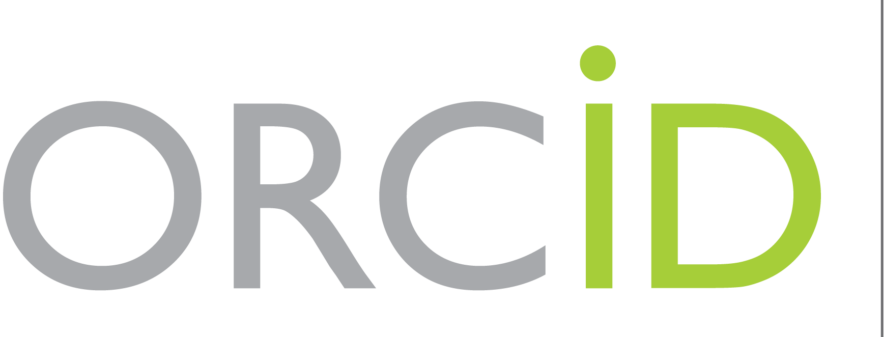The Role of Employee Competencies in Organizational Competitiveness
Keywords:
employee competencies, competitiveness, education, organizational success, innovationAbstract
In the modern business environment, organizations are faced with rapid market changes, technological advancements, and shifting consumer needs. In this context, employee competencies become a crucial factor
that influences organizational competitiveness.
Continuous education and employee development are not only tools for improving individual skills, but also
become a strategic element for organizational success. This paper explores the significance of employee competencies in maintaining an organization's competitive advantage, emphasizing how investing in human capital directly impacts innovation, productivity, and an organization's ability to adapt to changes.
References
Youndt, M.A.,& Subramaniam, S.A. Snel ( 2004)Intellectual capital profiles: an examination of investments and returns, Journal of Management StudiesVolume 41, Issue 2, Pages 335-361
Truss, C, Mankin, D.&Kelliher, C. (2012). Strategic Human Resource Management . Oxford: Oxford University Press
Pourrashidi R., Mehranpour M.& Nick M. F. (2017). Human resources management: challenges and solutions. Helix 7, 998–1001. doi: 10.29042/2017-998-1001
Yun X. (2017). “HRSC: a new perspective of human resource management” in Proceedings of the 14th
international conference on innovation and management, Vols I & II. ed. Aimin W. (Wuhan: Wuhan Univ
Technology Press; ), 146–150
Spencer, L. M., & Spencer, S. M. (1993). Competence at work: Models for superior performance. John Wiley & Sons, Inc.
Schumpeter, J.A. (1934) The theory of economic development. Cambridge, MA, itd: Harvard University Press
Vujičić S., Nikitović Z.&Minkov Đ.(2016) Influence of innovation on the competitiveness of small and medium
enterprises and entrepreneurs in Serbia, International scientific conference „Leadership and organization
development”, Kiten, Bulgaria
Radović Marković M., Salamzadeh A.& Vujičić S. (2019) Selection of organization models and creation of
competences of the employed people for the sake of competitiveness growth in global business environment,
International Review, Visoka škola za poslovnu ekonomiju i preduzetništvo, Beograd, br. 1-2, str. 64-71.
Naeini A. B., Mosayebi A.&Mohajerani N. (2019) A hybrid model of competitive advantage based on Bourdieu capital theory and competitive intelligence using fuzzy Delphi and ISM-Gray DEMATEL (study of Iranian food industry), International Review, ISSN 2217- 9739, No. 1-2, Faculty of Business, Economics and Entrepreneurship, pp. 21-35.
Prajogo D. (2006)The Relationship between Innovation and Business Performance—A Comparative Study between Manufacturing and Service Firm, Knowledge and Process Management 13(3):218 – 225
Schein, E. H. (1992). Organizational culture and leadership (2nd ed.). Jossey-Bass.
Argote, L., Miron-Spektor, E. (2011). Organizational learning: From experience to knowledge. Organization
Science, 22(5), 1123–1137.
Vujičić S., Ravić N.&Nikolić M. (2021) Uticaj planiranja na razvoj inovacija u malim i srednjim preduzećima,
Trendovi u poslovanju, vol. 9, br. 1, str. 78-83
Saks, A. M. (2006). Antecedents and consequences of employee engagement. Journal of Managerial Psychology, 21(7), 600-619.
Šćepanović I., Stevanović M, Šćepanović V. (2023) ,,Inovacije i digitalna transformacija kao pokretači
ekonomskog rasta u zemljama Evropske Unije,, Akademski pregled,Vol.VII,No.1,12-19,Univerzitet Bijeljina
Milanović J.(2020) ,,Analysis of the competitiveness of the sector of small and medium enterprises and entrepreneurs in the Republic of Serbia,, International Review,Faculty of Business, Economics and Entrepreneurship, Belgrade, 2020,ISSN 2217-9739, br. 1-2, str. 128-135
Agrawal R.(2016) 'Enterprise risk management' essential for survival and sustainable development of micro, small and medium enterprises,, International Review,Faculty of Business, Economics and Entrepreneurship, Belgrade, Br. 12, str. 117-124
Zakić N., Bugarčić M., Milovanović M. (2017) ,, Proclivity for open innovation in the case of agricultural and food companies in Serbia,, International Review, 2017, br. 3-4, str. 6471
Zečar J., Lozović N., Gavrić N. (2024) The degree of acceptance of innovation as a business model by the largest companies in the Republic of Serbia, International Journal of Economics and Law, Vol.14, No.41
Puška A., Štilić A.(2022) Unapređenje konkurentnosti zemalja primjenom računarstva u oblaku, Akademski
pregled,Vol.5,No.2,71-157,Univerzitet Bijeljina
Šormaz G. Značaj preduzetništva i inovativnosti za ekonomski razvoj Republike Srbije, Trendovi u poslovanju, 2021, vol. 9, br. 2, str. 30-39
Vemić M., Hrechyshkina O.,Samakhavets M.(2022) ,,On the potentialities of an innovation council concept in the Belarusian research and technological development, International Journal of Economics and Law, April 2022 ,Vol.12, No. 34
Becker L.(2022) organizational ,,Organizational resilience and change management ,, Journal of Entrepreneurship and Business Resilience, Vol 5, No 1.pp. 83-86
Marler, J. H., & Fisher, S. L. (2013). An evidence-based review of e-HRM and strategic human resource
management. Human Resource Management Review, 23(1), 18–36.
Levenson, A. R. (2018). Using workforce analytics to improve strategy execution. Human Resource Management, 57(3), 685–700.
Bergoč Z., Novak V. (2024) Young people,,s view on the impact of digitalization and artifical intelligence on modern work practice, International Journal of Economics and Law, Vol.14, No.42
Vasić D.,Milutinović V., Bjelica Vlajić I.(2024) Artifical intelligence and supre-macy-status and tendencies in
international law, International Journal of Economics and Law, Vol.14, No.41
Beer, P. & Mulder, R. H. (2020). The effects of technological developments on work and their implications
for continuous vocational education and training: A systematic review. Frontiers in Psychology, 11, 918.
Downloads
Published
How to Cite
Issue
Section
License
Copyright (c) 2025 Journal of Entrepreneurship and Business Resilience

This work is licensed under a Creative Commons Attribution-NonCommercial-NoDerivatives 4.0 International License.
http://creativecommons.org/licenses/by-nc-nd/4.0









